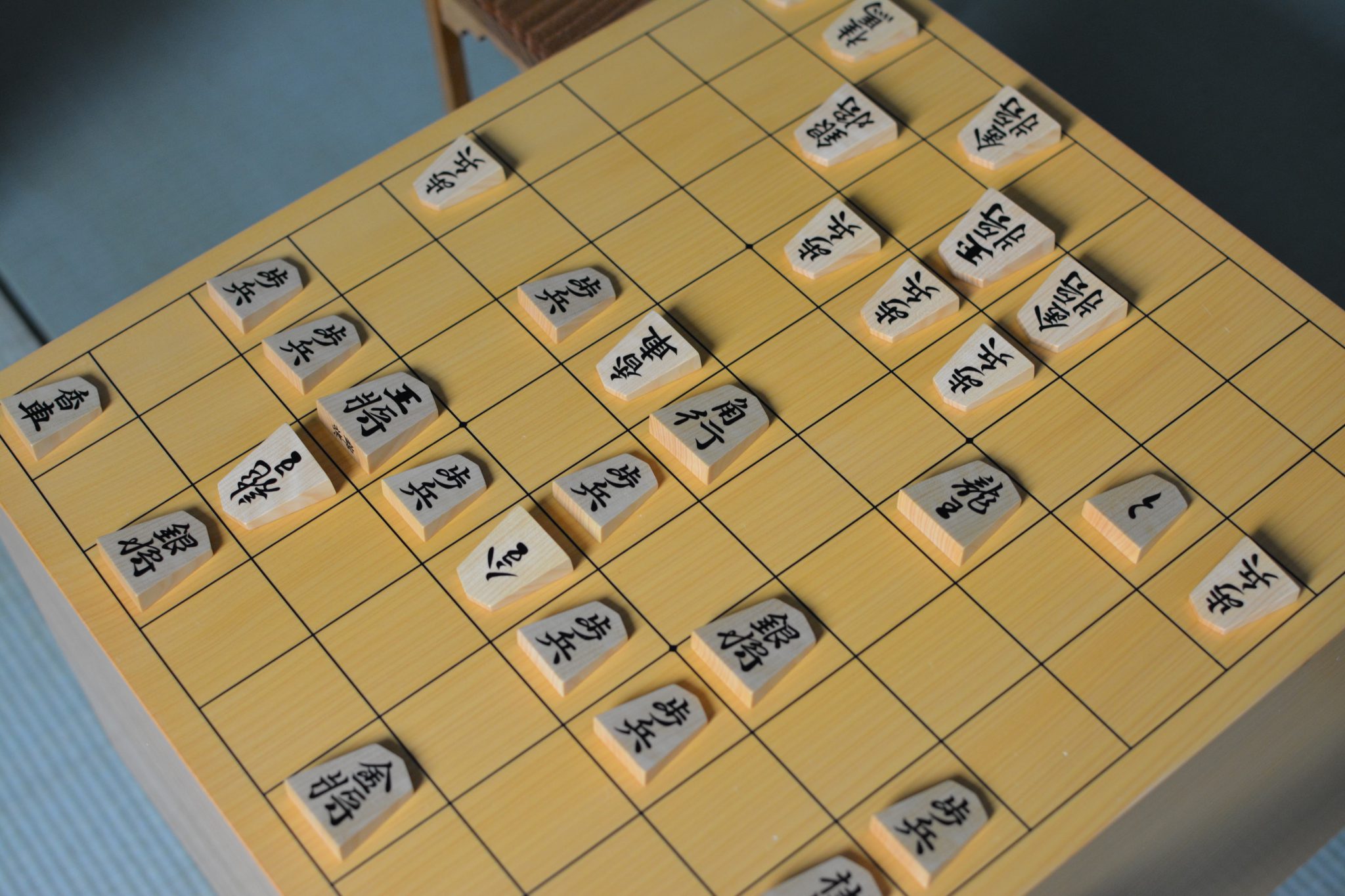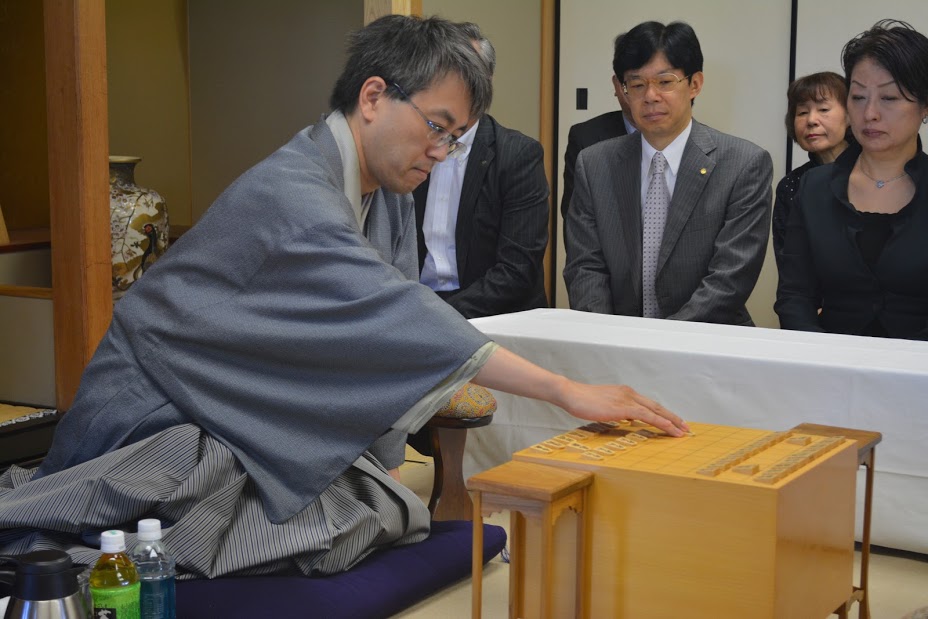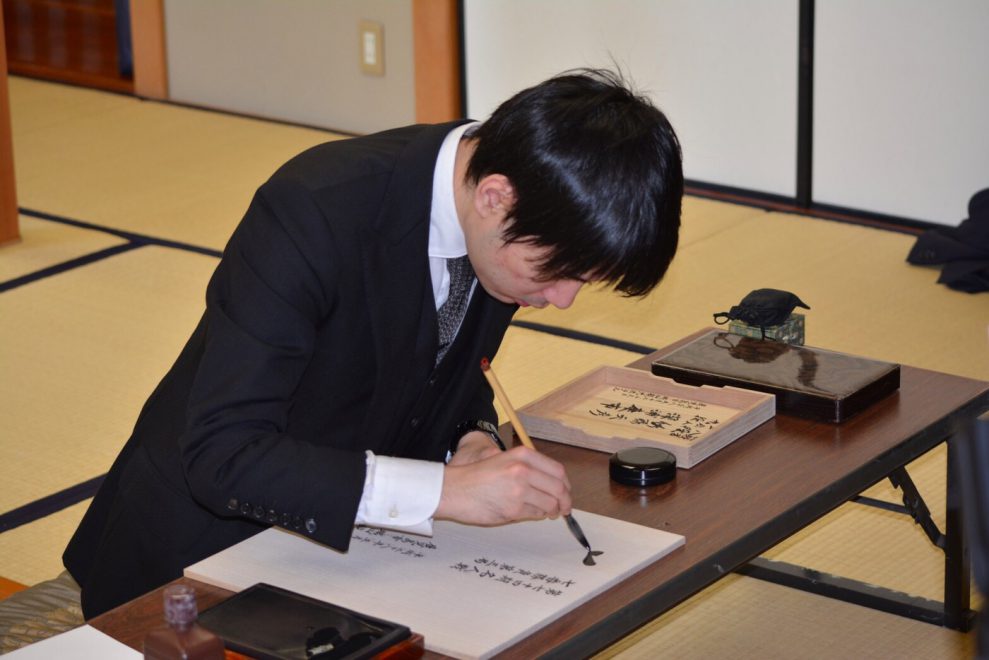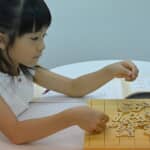26 January 2017
Let’s Learn More About Meijin (Master) Title Match!
We often talk about I-tsu-tsu’s Shogi board and pieces on our blog. These equipments were actually used by Sato Amahiko, then the 8th Dan (a rank given to relatively high ranked players) and Yoshiharu Habu, then Meijin, at the 74th Meijin Title Match, the third Kyoku (suffix put behind a number to count games).
We let children use these equipments at our Shogi events so that children would deepen their understanding about Shogi as traditional Japanese culture.

However, I think children cannot understand the real meaning of our saying that “These are the Shogi equipments actually used at the Meijin Title Match,” since they play Shogi for the first time.
Today, I would like to introduce a long history of the Meijin Title Match, difficulty and fame of winning the match to be Meijin.
1. History of Meijin Title Match
There are seven major title matches in the world of Shogi. Among them, The Meijin Title Match has the longest history with prestige, and the winner of this match is granted a title of Meijin. For your information, the other six title matches are: Ryuou Title Match, Oui Title Match, Ouza Title Match, Kiou Title Match, Oushou Title Match, and Kisei Title Match.
Before we start learning the history of Meijin Title Match, we should know its origin.
It is said that Oda Nobunaga was the first one to use the term of “Meijin”. When Oda Nobunaga saw a game of Go played by Honinbou Sansa, the founder of Honinbou family, Nobunaga appointed Sansa as Meijin. After that, Sansa was appointed as a contact person, a supreme position in the world of Go and Shogi by Tokugawa feudal government. In 1612, Sansa passed his position to a branch of Ohashi family, one of the three famous Shogi families in the period of Edo. The other two families were the original Ohashi family and Ito family. Since then, the strongest Shogi player in those three families received the title of Meijin.
Even now, we call someone who is good at something as Meijin, which is derived from the above episode.
Since 1612, the title of Meijin was passed down in a hereditary system among the three families. However, the hereditary system drastically changed to a merit system in the late 1920s, as a tournament to decide the strongest Shogi player was established. That’s how Meijin Title Match where talented players compete each other started.
Precisely, for the titles of the 12th and 13th Meijin, recognized and competent players were recommended, and they used the titles without actually fighting in a tournament.
2. The System of Meijin Title Match

The system of Meijin Title Match has been changing since the start in the late 1920s, and the current rules are as follows.
- Professional Shogi players are divided into five classes, A, B-1, B-2, C-1, and C-2 based on the results of games. Players who can challenge the Meijin Title Match are only the top 10 of class A.
- Each of class A players fights in a round-robin tournament, and the winner will have a chance to challenge the Meijin Title Match.
- Meijin and a challenger fight seven games for two days, and a player who wins four games first will gain a victory. For your information, the current Meijin is Amahiko Sato, as mentioned in the above.
3. The Title of “Meijin”

Only four to six players can be professional each year. I bet you can see how difficult to be pro in the world of Shogi. As mentioned in section 2, the ten tip-top professional players who went through the toughest trials need to fight for the only one seat to challenge Meijin Title Match.
In short, they need to win all the games against all the formidable opponents. That is why Meijin Title Match is the toughest among the seven title matches. The winner of this match is called as Meijin regardless of other titles he may possess.
Meijin and Ryuou, a winner of Ryuou Title Match, take a role to sign on the documents to grant amateur players a certification of Dan.
Players who win the title of Meijin over five times are bestowed a title of “Eisei Meijin (permanent Meijin)” after retirement from the world of professional Shogi world.
How was today’s article?
I think you may find a fresh view of a word of “Meijin,” the Meijin Title Match available on video sites, and also our Shogi board and pieces.
Reference: “Puro Kishi Meikan 2015-2016” (The directory of professional Shogi players)
Published by Takarajimasha Inc.

